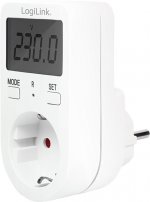Hello Salas, thanks for the reply, for safety reasons I will try carefully, today I found a strange problem, the process is such an installation, that does not need a radiator DN2540 due to careless installation of 840, power on the output without voltage, found after reinstalling the DN2540 everything is normal, but found that the rectifier bridge after the consumption of 52ma current, RS only 32ma current, there is 20ma do not know where the consumption is, the radiator high temperature has 70 degrees Celsius, has not found the reason
It was measured under connected load, the load current was 12ma, I adjusted R4 (200R) so that RS(10R) was 32ma, everything was normal, but at this time the original power supply consumed 52ma, (measuring the original power filter choke voltage drop conversion current) more than 20ma, I want to know if SSHV2 itself needs to consume current? Thank you!
It needs to consume few mA of current for its small transistors to bias them and more for the IRF840 to achieve low output impedance spec. That is why we add 20mA extra CC setting above what we expect as peak consumption from load's side.
All we ever talked in this thread was in relation to the DC mA we set with the trimmer in the regulator's constant current source. When you measure elsewhere before the regulator its possible there are reactive component factors changing your incoming mA calculated indication. But we have not followed the matter in the past to tell you what to expect there. People use various rectification and filter styles anyway. Tube or solid state rectifier, choke or no choke, different values of storage capacitors, RC filter resistors, bleeder resistors etc.
You can change that 1uF DC input decoupling capacitor to 0.1uF and see if there's difference in mA indication on that choke. You can also use a cheap wall power monitor for indication to avoid probing in raw HV places like chokes etc. But don't forget it installed when to critically listen. Avoid that device's unknown impedance and other possible effects between audio equipment and wall power after noting consumption readings.
All we ever talked in this thread was in relation to the DC mA we set with the trimmer in the regulator's constant current source. When you measure elsewhere before the regulator its possible there are reactive component factors changing your incoming mA calculated indication. But we have not followed the matter in the past to tell you what to expect there. People use various rectification and filter styles anyway. Tube or solid state rectifier, choke or no choke, different values of storage capacitors, RC filter resistors, bleeder resistors etc.
You can change that 1uF DC input decoupling capacitor to 0.1uF and see if there's difference in mA indication on that choke. You can also use a cheap wall power monitor for indication to avoid probing in raw HV places like chokes etc. But don't forget it installed when to critically listen. Avoid that device's unknown impedance and other possible effects between audio equipment and wall power after noting consumption readings.
Attachments
Greeting! The problem was found, it was my fault, because the DN2540 was soldered on the front of the pcb, and too much solder spilled on the back of the pcb caused the pins to short circuit the DS, which is a shame! SSHV2 power supply is cleaner than the traditional power supply sound, has a better sense of layering, high-quality traditional power supply sound is more intense, but the soundstage is not SSHV2 can be opened, this is my sense of hearing, thank you again for Salas selfless dedication! Cheers!
Congratulations for troubleshooting. Many times misbehavior in electronics is due to random construction imperfections.
Even in automated surface mount production by robots there are failures. Else they wouldn't try the boards with bed of nails electrical parameters testing in the end.
Also happy to know you like the sound. Shunt reg wants to promote clean but also relaxed and layered feeling. Sense like Class A. What is your application circuit? Line amp? Phono amp? Having a picture to show?
Even in automated surface mount production by robots there are failures. Else they wouldn't try the boards with bed of nails electrical parameters testing in the end.
Also happy to know you like the sound. Shunt reg wants to promote clean but also relaxed and layered feeling. Sense like Class A. What is your application circuit? Line amp? Phono amp? Having a picture to show?
No it does not come in a natively negative version. You could go creative puting two in series like in lab supplies though. Then their tie point becomes virtual zero. The bottom supply becomes negative in relation to the top one. Like you can also do with battery cells for dual rail op-amps. Takes to use independent secondaries and rectifiers for each one psu though. So they can float.
- Home
- Amplifiers
- Power Supplies
- Simplistic MosFET HV Shunt Regs
